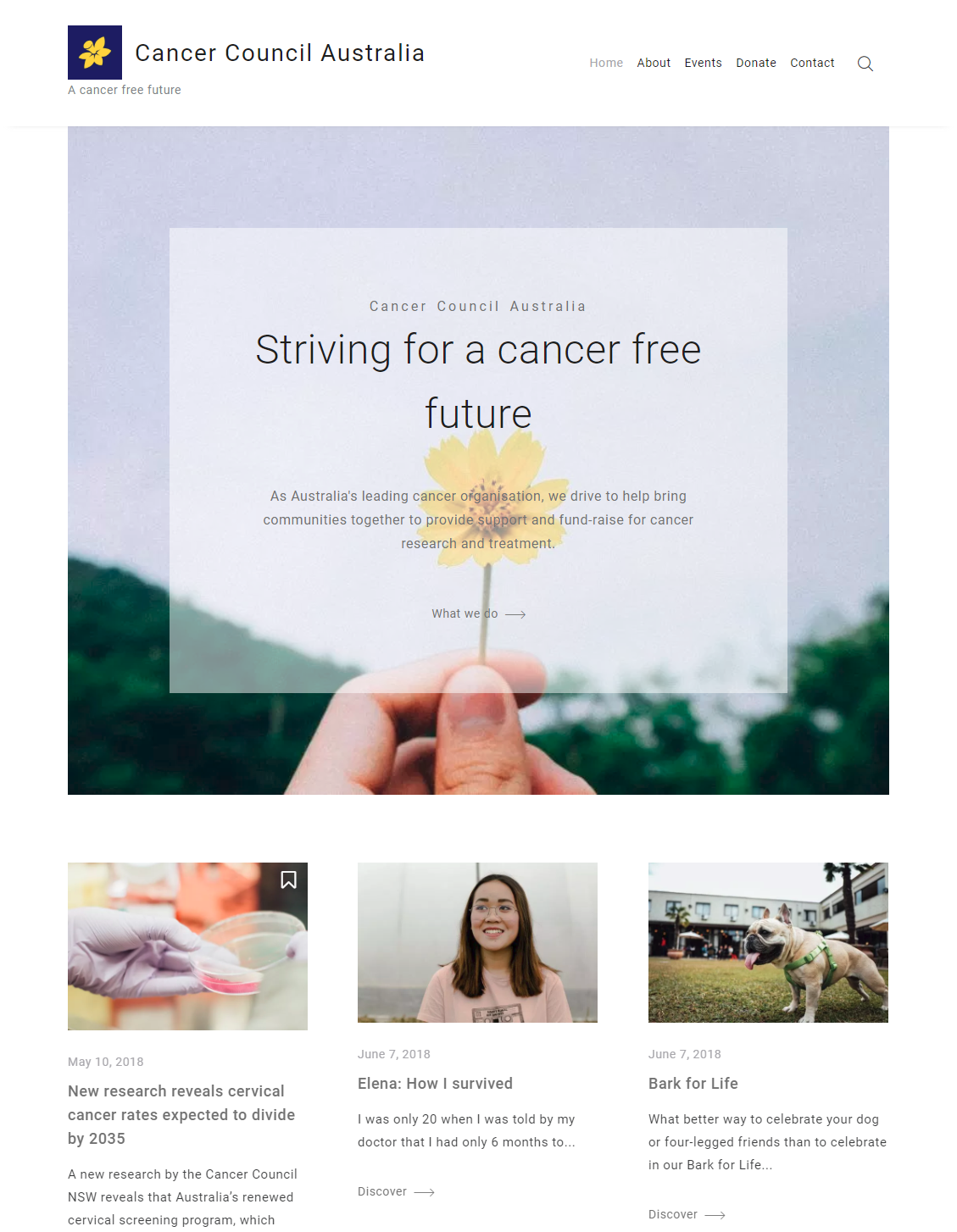
Cancer Council Social Media Strategy
Creation of social media plan to increase digital youth engagement with Cancer Council Australia and an accompanying WordPress website as part of Designing Social Media unit.

Cancer Council Australia is Australia's biggest charity organisation dedicated to funding research and bringing awareness towards a cancer-free future. As part of my social media strategy project, I worked with my colleague to devise a strategy to increase youth engagement with Cancer Council's social media channels. Through the use of various social media analysis tools, we gathered data on the organisation’s social media audience, engagement metrics and personalities to inform a strategy that would increase online interaction with young Australians and increase awareness towards its cause. In addition, we also designed a WordPress site to act as the content hub to supplement the proposed strategy.
My main role was handling research and devising the content strategy across the online channels. For the WordPress website, I was responsible for organising website structure, supplementing custom CSS and setting up an analytics dashboard. Being a two-person team of designers, many of the responsibilities overlapped to complete the project.
To begin our research of the health organisation and its social media channels through different methods. We conducted online ethnography focusing on three of their social media channels: Facebook, Twitter and Instagram. This involved collecting content from their past posts, comments, replies and taking note of themes and personality. Ethnography helped to give us an insight on the existing audience of Cancer Council’s social media and how they compare across channels. A social media analysis tool called Socialbakers was used to monitor reach and engagement metrics of these channels to get quantifiable data on how many people interacted with the organisation. We further explored big data tools such as Similar Web and Google Trends to understand site traffic and common topics related to cancer that people searched on the web.
The Facebook community valued knowledge of organisational services, health education, and diversity. There were also several enquiries about Cancer Council sun protection products.
On Twitter, followers liked to hear about support services, international cancer events, inspirational stories and government-related news. Retweets of international events from other official twitter accounts gained more interactions and reach.
Instagram being an image-focused channel showed a higher appreciation for infographics and posts regarding diversity and community. While Instagram had a lesser amount of followers, analysis tools revealed that they engaged with posts more so than in other channels.
Based on posts, it was found that content was aimed at no particular age group but were interacted with by older users. Content such as photos and videos often portrayed the middle-age and elder age group. Representation of young people were usually in a family context. For me, this came as a surprise having come across the organisation through schools fundraising.
Across all channels, the content that gained the most attention were images, videos and informational links. In our research these types of posts had more interactions (as likes, comments or shares and equivalents), could capture attention, and convey information at a quick glance.
Due to the lack of youth presence on Cancer Council social media, we wanted to focus on increasing engagement with teens and young adults in the 16-25 age group. Since most of the demographic is online using the existing social media platforms, this would allow a further reach throughout the online community and help get people involved in fundraising events.
To do this, we saw three main post types needed: Images, Videos and Informational Links to be used across each of the research digital channels. According to the personality and nature of each platform, we outlined the types of content each social media should post to raise engagement.
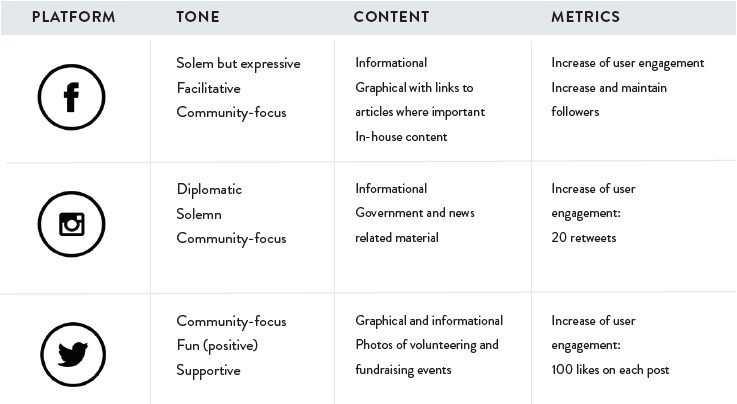 Graphic created by Jacqueline Tenges
Graphic created by Jacqueline Tenges
From this I created a content pillar chart to document what kinds of content - be it inspirational, educational, or event-based - should be used in their social media and how it would be distributed.
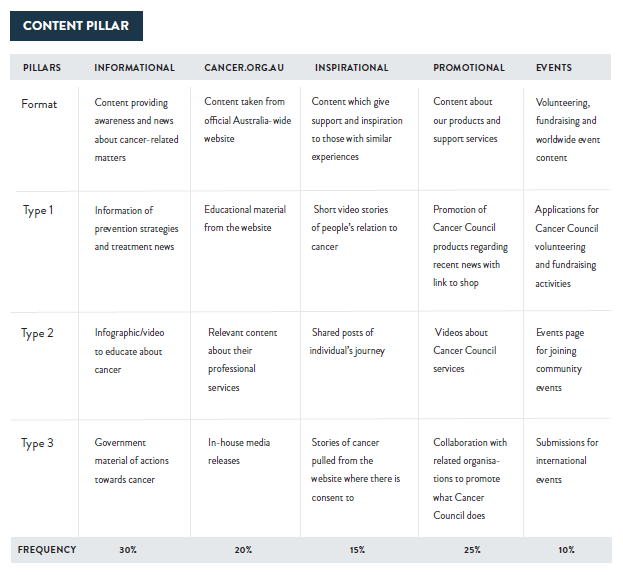 Graphic created by Jacqueline Tenges with content by Gabriella Hartono
Graphic created by Jacqueline Tenges with content by Gabriella Hartono
Mockups of posts were created to demonstrate the strategy. Below, an informational post on Facebook with a link to the article celebrates the significance of the cancer research succinctly, with sample engagements:
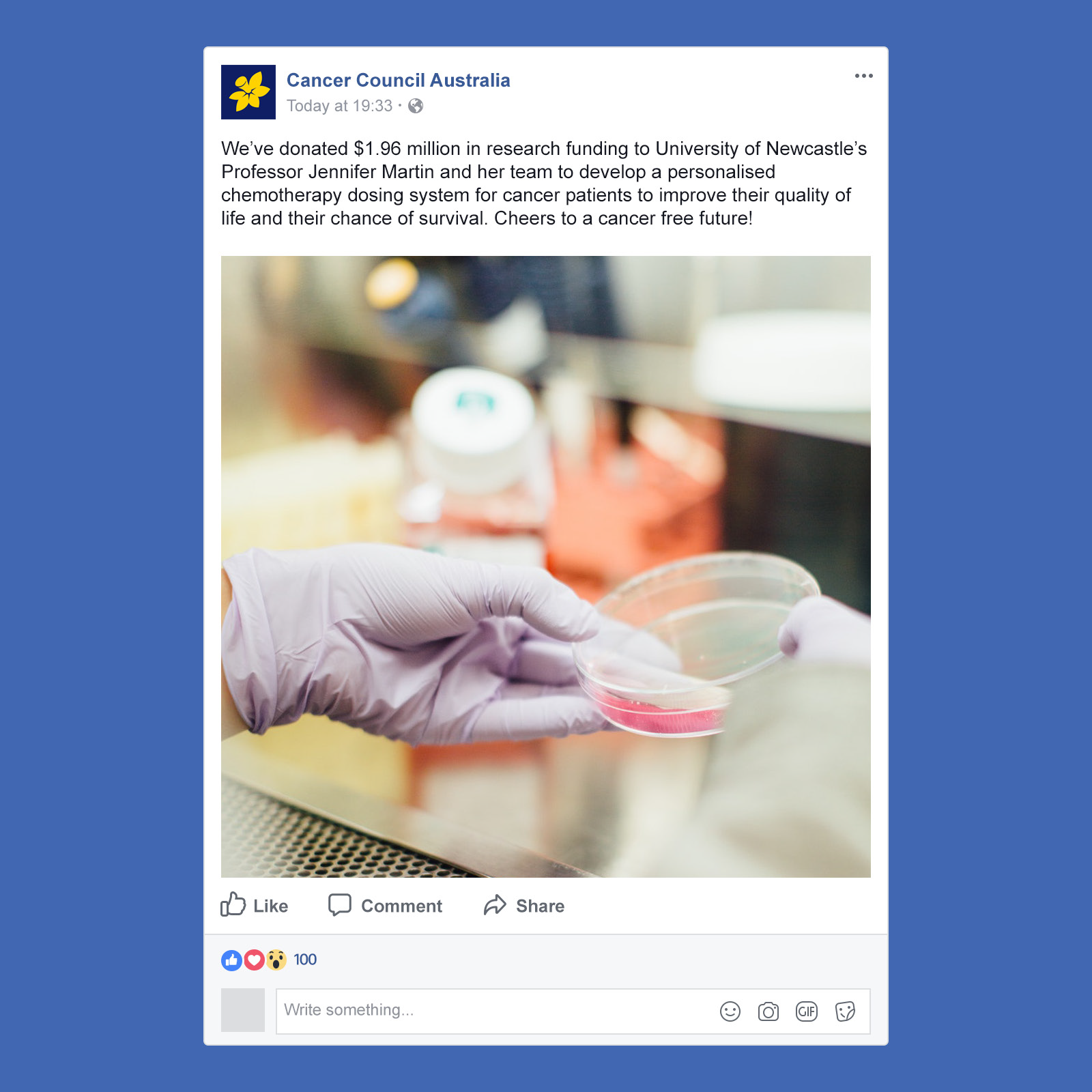
The WordPress website acted as the content hub for posts from our social media strategy. We chose to go with a clean, minimalist theme to go with the white and yellow of their brand colours, in line with the seriousness of the subject but with a friendly interface to convey the support the organisation gives in turn. The image of a yellow flower was a sourced image that reminds of the daffodil used in their logo, symbolising hope, which we used in the landing page's hero.

Following the content pillars and post types we identified in our engagement strategy, we created blog posts and pages which highlights engagement with the cause and within the community. Posts involved short reads of cancer information, fundraising events and inspirational stories about how Cancer Council has helped young Australians. Images were key in attracting attention to each post along with a succinct headline. Below are the range of posts we created to fill in content as displayed on the home page below the hero.
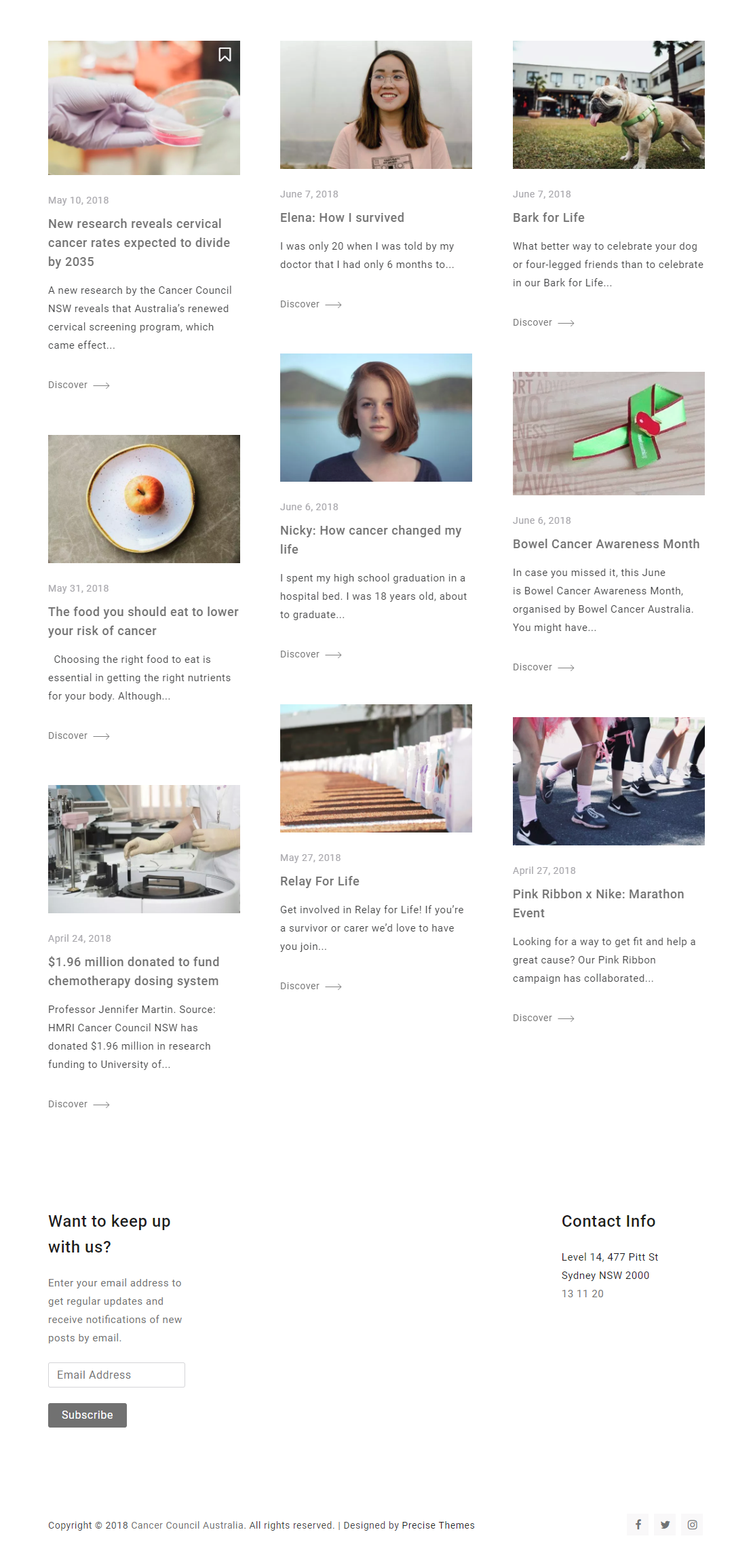
Posts should be readable and be relatively short reads. For this we referenced a real article and summarised its contents while keeping a hopeful tone. Each post was tagged by content type on the right and share buttons allowed for social media reach.
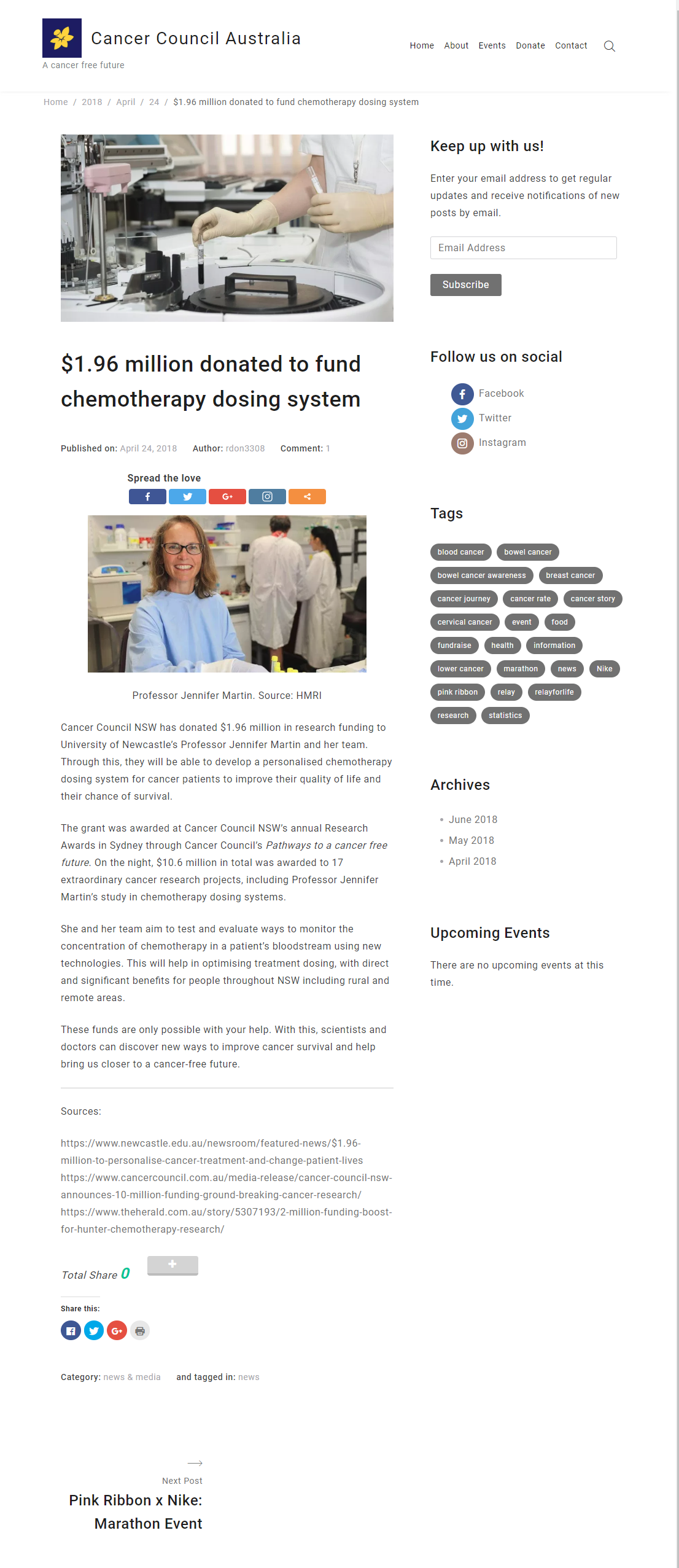
Engagement with the organisation was created through the Events and Donate pages. In Events, site visitors would be able to view upcoming events and register for volunteering in Cancer Council events in their community.

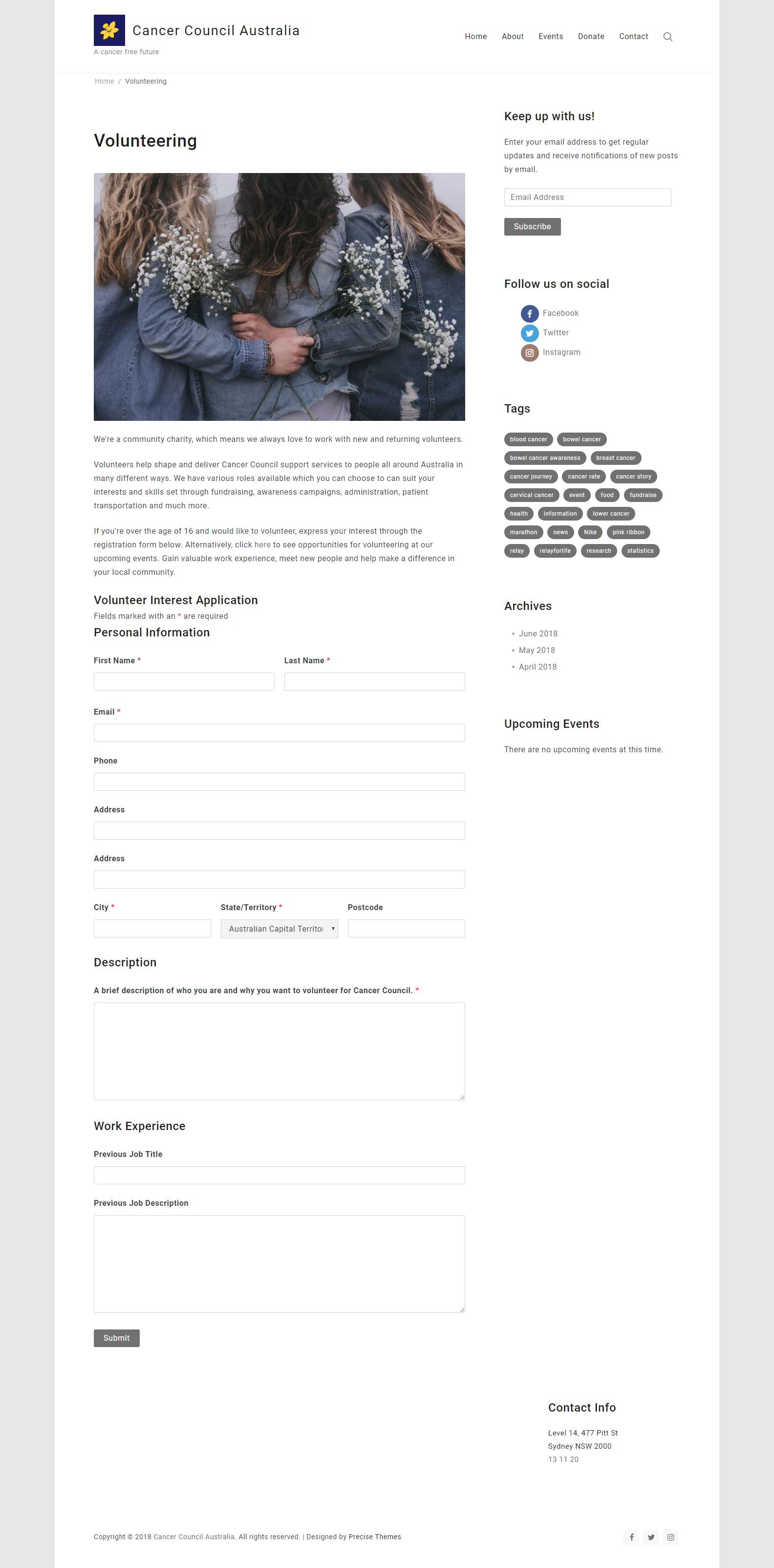
In Donate, visitors can browse Cancer Council products such as sunscreen, hats and collaboration products with their sponsors as well as donate directly to Cancer Council.
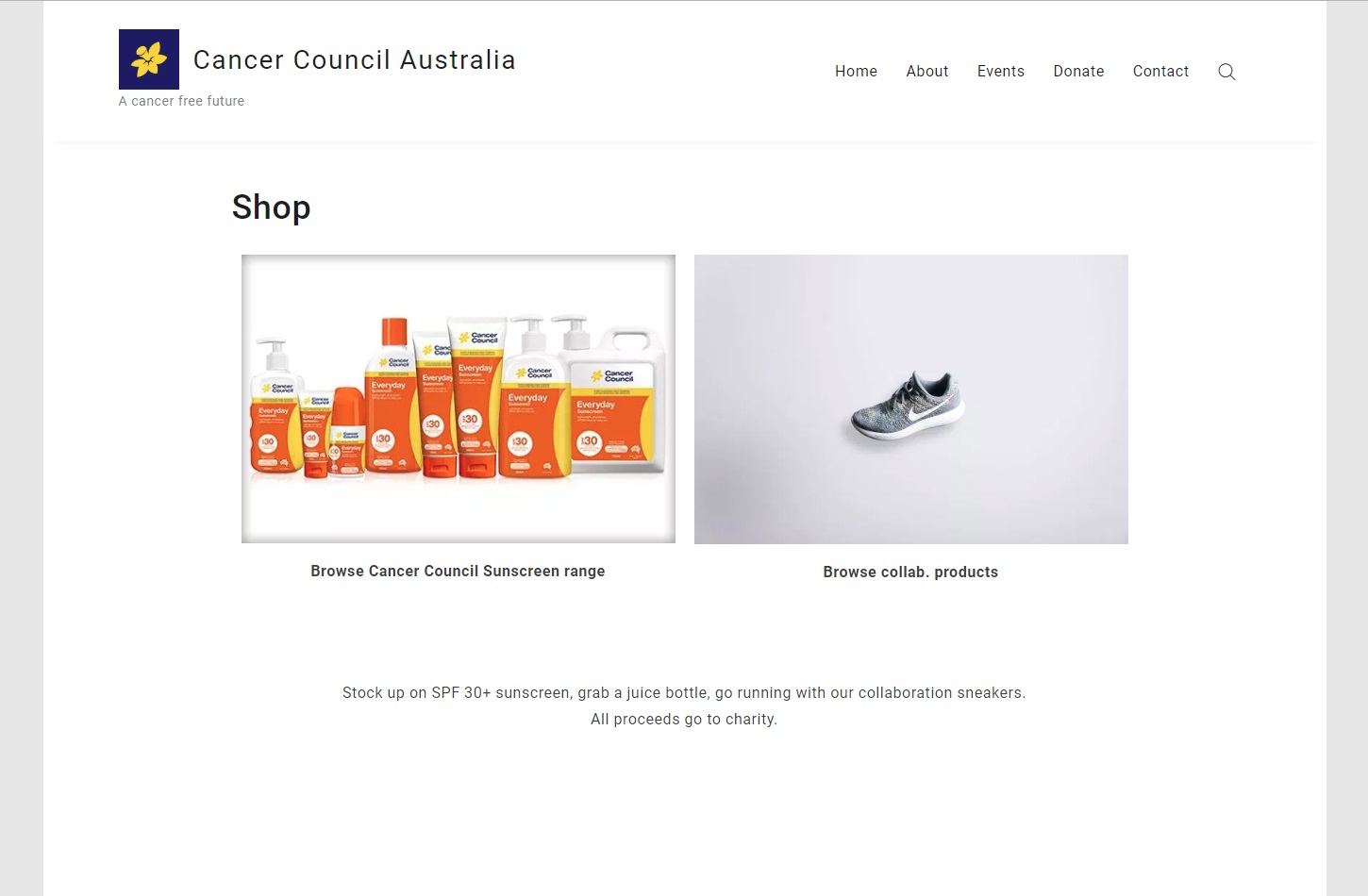 Custom css was used to make buttons from text and images.
Custom css was used to make buttons from text and images.
In order to test whether or not our content engaged with intended audiences, I set up a dashboard using MonsterInsights in WordPress to connect to Google Analytics. This would enable us to track how many people viewed the website, what pages they visited, links clicked, and even where in the world the website was accessed. While it was out of the scope of the project to gather metrics over an extended period of time, a few tests among peers showed the potential this information could give to measure success and improve content engagement.
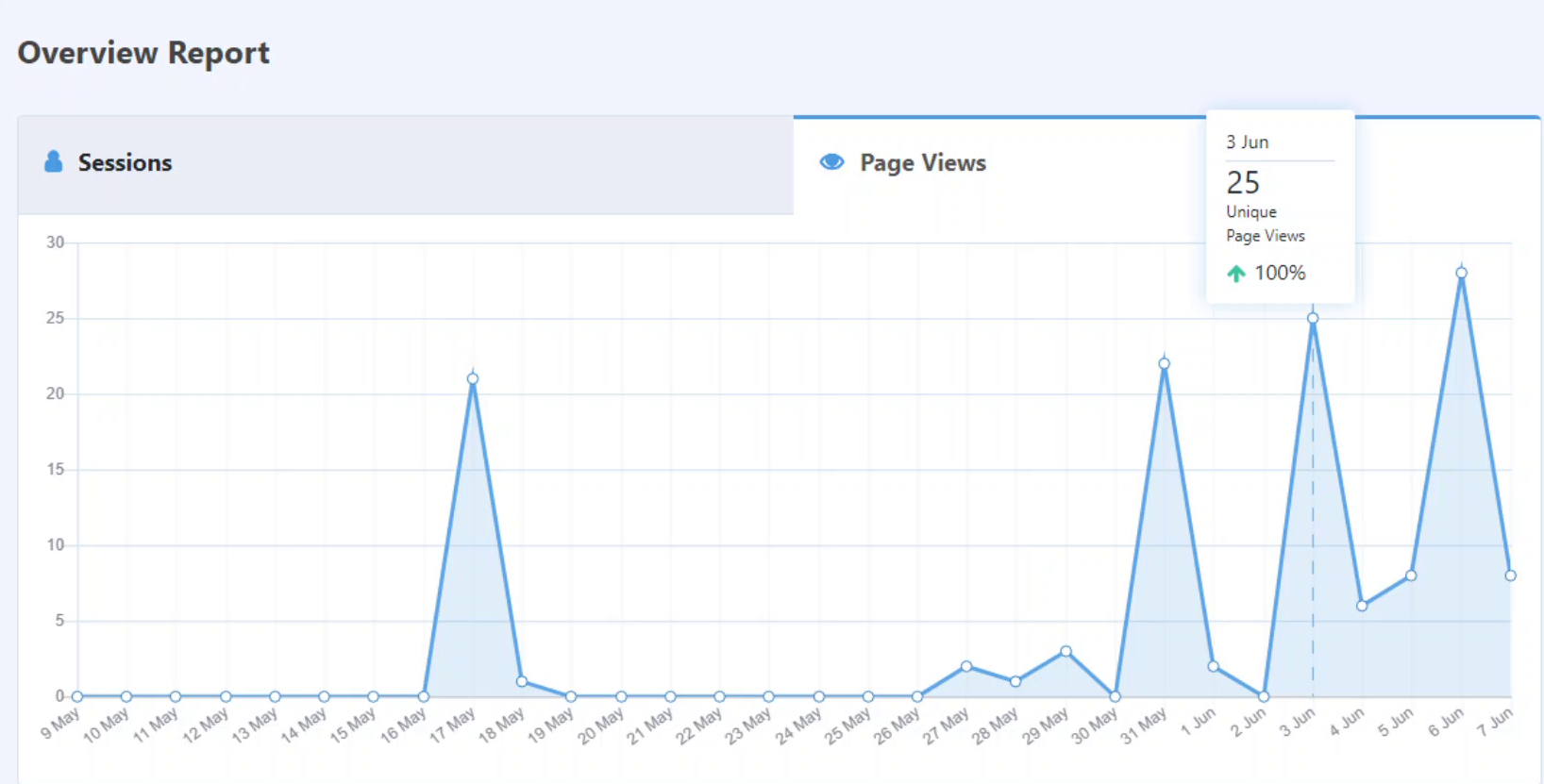
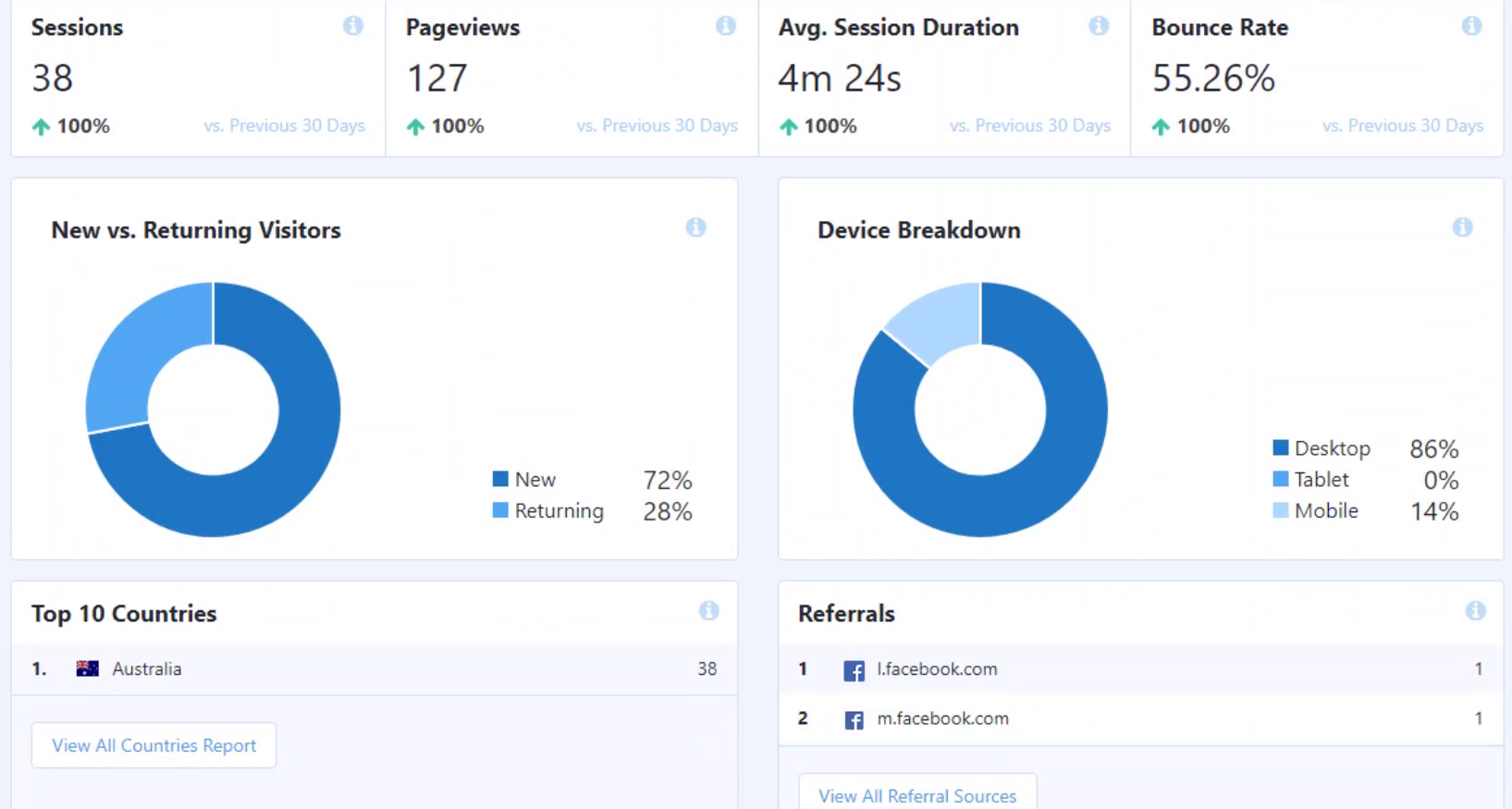
The strategy and WordPress website was received well through the feedback given. While we were unable to test the actual strategy due to the restraints of the project scope, the social media analytics tools used and the WordPress analytics dashboard would have been helpful in measuring the success of the proposed strategy. It has enabled me to learn about ways social media campaigns can be impactful and how certain content can be more engaging to an online audience.